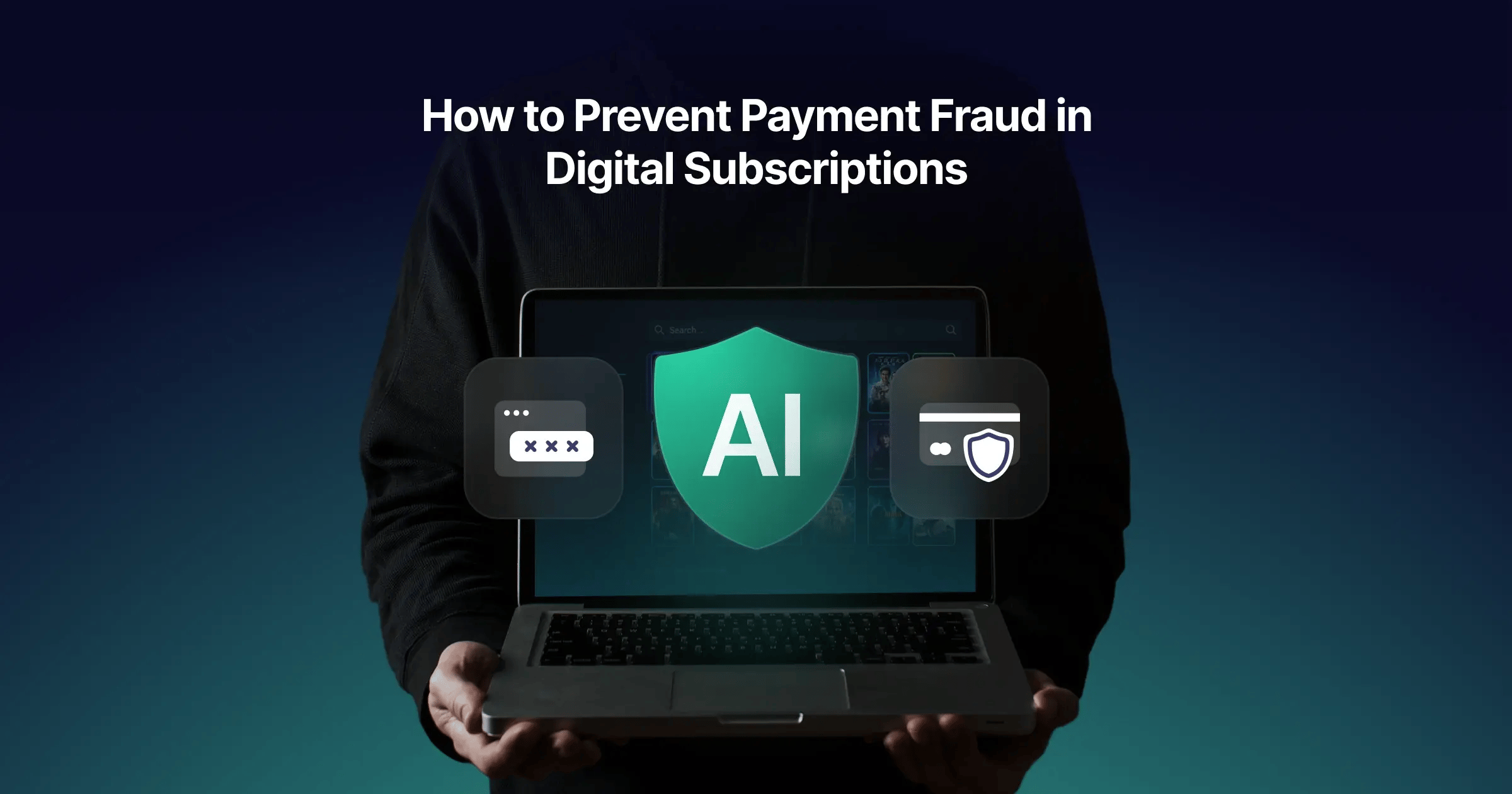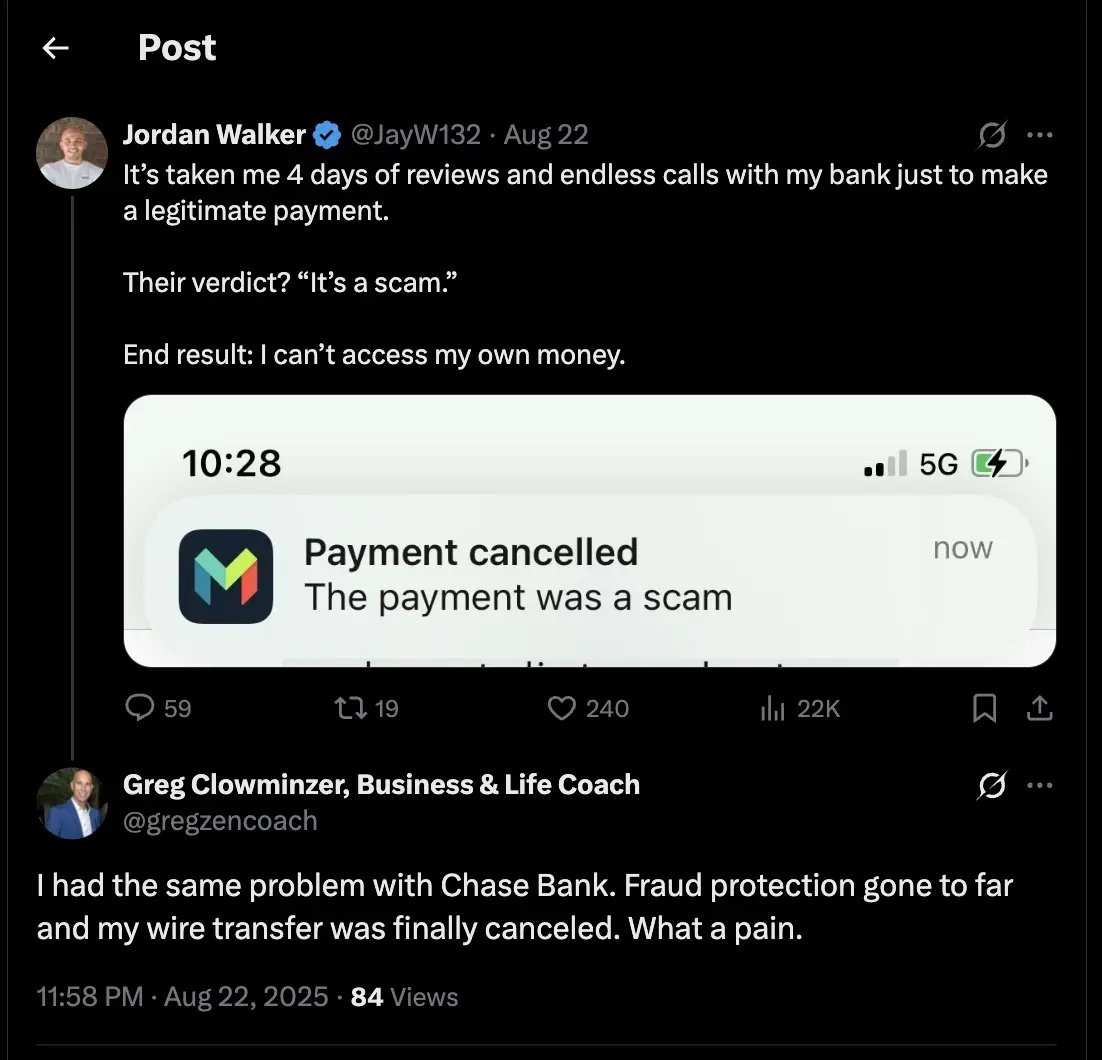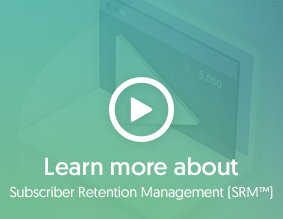5. Protect the entire customer journey
Fraud doesn't only happen at checkout. Fraudsters exploit weak points throughout the customer lifecycle:
- Registration and login (credential stuffing attacks)
- Account management (unauthorized profile changes)
- Post-purchase actions (return fraud, coupon abuse)
A comprehensive fraud strategy covers every touchpoint, not just payment processing. It means implementing protective measures from the moment a customer first interacts with your brand. By monitoring and securing each stage, businesses can proactively detect and prevent fraudulent activities across the entire customer lifecycle, ensuring a robust defense against evolving threats.
How the right partner helps you fight fraud and grow
Managing fraud in-house requires significant resources: dedicated teams, advanced technology, and constant monitoring. For most subscription businesses, partnering with a platform that offers integrated fraud protection is the smarter path.
A subscription management platform with built-in fraud tools provides:
-
Revenue protection. Pre-authorization screening blocks fraud before it impacts your bottom line.
-
Reduced operational overhead. Automated fraud detection lets your team focus on growth initiatives rather than manual reviews.
-
Customer trust. A secure, frictionless experience keeps legitimate subscribers happy and engaged.
When evaluating partners, prioritize those that treat fraud prevention as part of a holistic payment strategy. Fraud and payments shouldn't be managed in silos – they're two sides of the same coin. The best solutions align fraud prevention with authorization success, ensuring that security measures don't inadvertently suppress conversion.
For example, Cleeng’s Merchant provides D2C brands with AI-driven anti-fraud tools, built-in security measures such as email verification and payment session throttling, as well as multi-layered risk settings whose performance is constantly monitored. This protects your revenue against emerging fraud threats with ease and efficiency. This results in Cleeng’s chargeback rate being less than half that of the industry (0.3% vs industry average of 0.8%), with brands like Jme reaching chargeback rates of 0.2%.
 The industry average chargeback rate has been calculated by taking the average of the industry chargeback rates reported by Paykings (1%) and Clearly Payments (0.56%).
The industry average chargeback rate has been calculated by taking the average of the industry chargeback rates reported by Paykings (1%) and Clearly Payments (0.56%).
Fraud prevention enables growth
Protecting your subscription business from fraud isn't just about minimizing losses. It's about building a foundation for sustainable growth.
When you prevent fraud effectively, you maintain healthy relationships with payment processors, reduce operational costs, and create a seamless experience for your customers. You protect customer lifetime value and safeguard your brand reputation. Most importantly, you gain the freedom to scale without worrying that growth will expose you to unmanageable risk.
A smart fraud strategy is essential for thriving in the subscription economy. Ready to protect your revenue and build a more resilient subscription business? Talk to a Cleeng expert today or create your free Cleeng Pro account to see how you can get started with Cleeng in less than 60 minutes.
Frequently Asked Questions (FAQs) on Payment Fraud Prevention
-
What is online payment fraud and what is its real cost to a business?
Online payment fraud is any unauthorized or illegal transaction conducted by a fraudster. For a business, the cost is far greater than just the lost transaction. For every dollar lost to fraud, merchants often lose an additional $3.75 in chargeback fees, operational costs, and bank penalties. This doesn't include the damage to brand reputation and customer churn from false declines.
-
How does real-time payment fraud monitoring work?
Real-time payment monitoring works by using AI and machine learning to analyze hundreds of data points for each transaction before it is sent to the bank (this is called "pre-authorization"). In milliseconds, it assesses risk by looking at the user's device, location, and purchase behavior to decide whether to block the fraud attempt or approve the legitimate customer.
-
What are the most common types of fraud in the subscription industry?
The subscription industry faces unique fraud types, including:
-
Card testing: Fraudsters use small transactions to see if stolen credit card numbers are active.
-
Free trial abuse: Creating multiple fake accounts to repeatedly exploit free trial periods.
-
Account takeover (ATO): Using stolen credentials to hijack a legitimate subscriber's account.
-
Friendly fraud: A legitimate customer making a purchase and then disputing the charge with their bank, claiming it was unauthorized.
-
What are the most effective techniques to prevent online payment fraud?
The most effective strategy involves multiple layers:
-
Pre-authorization screening: Stopping fraud before it reaches the bank.
-
AI & automation: Using machine learning to detect patterns and scale protection during traffic spikes, which manual reviews cannot handle.
-
Unified strategy: Balancing security rules with customer conversion goals.
-
Journey-wide protection: Securing all touchpoints, including login and registration, not just the checkout.
-
How can a business prevent payment fraud without hurting customer conversion rates?
The goal is not "zero fraud," which leads to high "false positives" (blocking good customers) and lost revenue. The best approach is to find an acceptable fraud threshold that maximizes your payment success rate – the percentage of legitimate customers who successfully complete a purchase. This involves using smart, AI-driven tools that can tell a good customer from a fraudster, rather than blunt rules that block everyone.
-
Why is pre-authorization fraud detection so important?
Pre-authorization detection is critical because it blocks fraud before you are charged processing or chargeback fees. By filtering out fraudulent attempts before they reach the issuing banks, you maintain a cleaner transaction history. This signals to banks that you are a low-risk merchant, which leads to higher authorization rates for your legitimate recurring subscription payments.
-
What should a business look for in a payment fraud monitoring company?
Look for a partner, not just a tool. Your provider should offer an integrated solution that treats fraud and payments as part of one holistic strategy. Key features include AI-driven pre-authorization screening, automated tools that reduce your team's manual workload, and a clear focus on maximizing your overall payment success rate, not just blocking fraud. Cleeng is a great example of a trustworthy and efficient solution.








